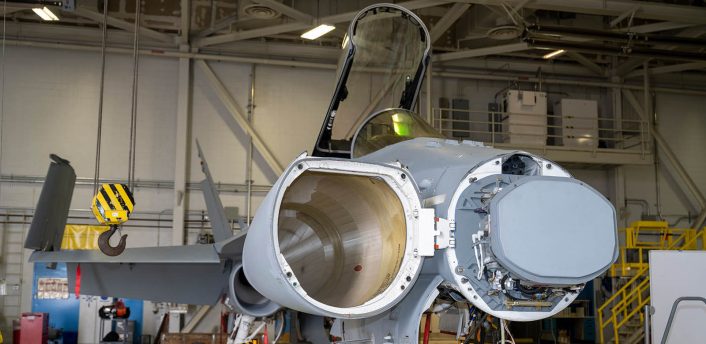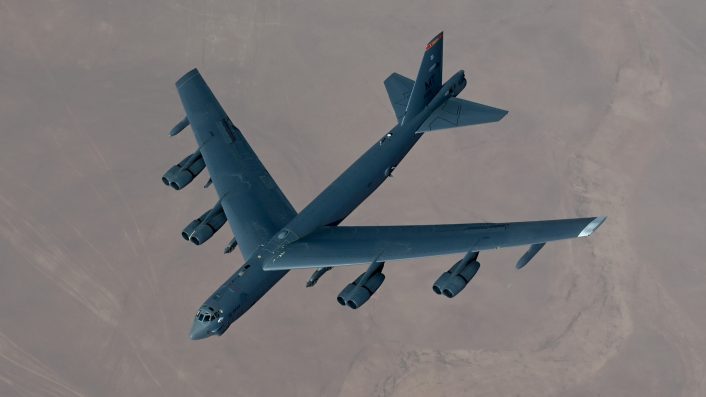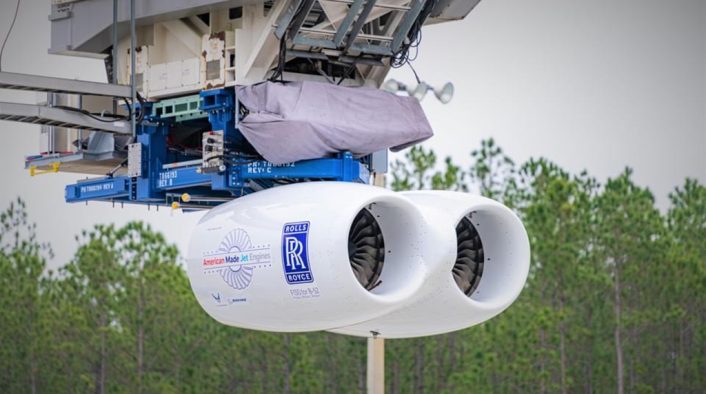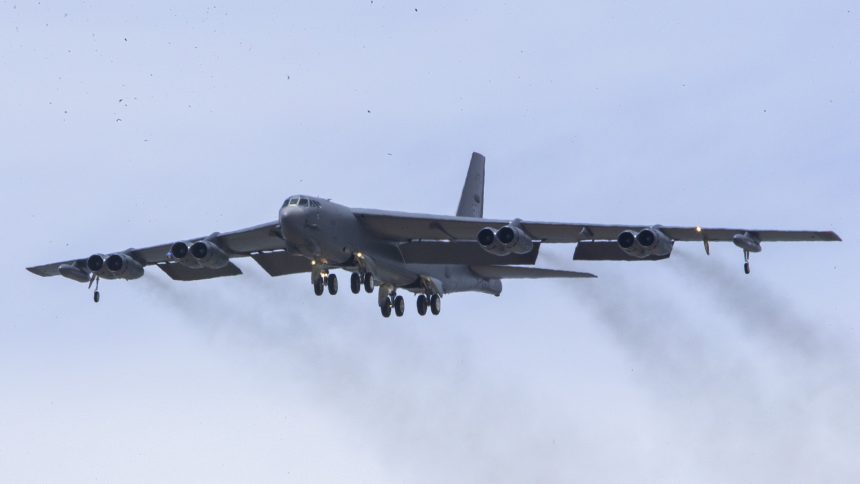The AN/APQ-188 radar upgrade for the B-52 is finally preparing to begin flight testing, following years of delays, cost overruns, and a program review.
The U.S. Air Force’s long-running effort to equip the B-52 Stratofortress with a new radar is moving closer to flight testing. Lt. Gen. Andrew J. Gebara, Deputy Chief of Staff for Strategic Deterrence and Nuclear Integration, provided an update on the B-52 Radar Modernization Program (RMP) during an online event hosted by the Air & Space Forces Association’s Mitchell Institute for Aerospace Studies on Aug. 27, 2025.
“I believe that we are very close to getting that first radar to Edwards Air Force Base to begin flight test,” Gebara said, adding that he was “very eager” to see the milestone reached, speaking also from the perspective of a former B-52 pilot. The start of flight testing could mark a potential turning point in a modernization program that has faced significant schedule slips, cost overruns, and a congressional review.
The Radar Modernization Program
The radar upgrade is a cornerstone of the broader B-52J configuration, which also includes new engines, updated avionics, and structural improvements intended to keep the bomber fleet in service through 2050. The new radar, Raytheon’s AN/APQ-188 – also referred to as the Bomber Modernized Radar System – is meant to replace the obsolete mechanically scanned AN/APQ-166 that has been in use since the Cold War.
The AN/APQ-188 is an active electronically scanned array (AESA) radar derived primarily from the AN/APG-79 found on the U.S. Navy’s F/A-18E/F Super Hornet and EA-18G Growler, with additional elements from the AN/APG-82 of the U.S. Air Force’s F-15E and F-15EX. By leveraging existing, proven designs, the Air Force aimed to control costs while giving the B-52 access to modern multi-mode AESA capabilities.

AESA radars bring significant advantages over mechanically scanned systems. Among these are increased detection range, improved resolution, greater resistance to jamming, and multifunctional capabilities that can also support electronic warfare.
For the B-52, the new radar is expected to enhance target acquisition, potentially with ground moving target indication and synthetic aperture radar functions. Additionally, although it is optimized for air-to-ground roles, the new radar could still retain air-to-air capabilities to the bomber defend against air-to-air threats.
Delays And Cost Growth
Despite these ambitions, the program has faced serious difficulties. Raytheon delivered the first radar to the Air Force nearly two years ago, but flight testing, initially planned for Fiscal Year 2024, was postponed to Fiscal Year 2026. This delay also shifted the expected initial operational capability from 2027 to a window between 2028 and 2030.
A June 2025 report from the Government Accountability Office (GAO) attributed the setbacks to challenges with environmental qualification, software development, and parts procurement, while the Pentagon’s Director of Operational Test and Evaluation (DOT&E) flagged difficulties in physically integrating the radar into the B-52’s nose section.
A rare view of B-52’s open nose. In 2023, Boeing initiated a major radar upgrade program for the B-52. The Radar Modernization Program (RMP) will equip the venerable B-52H with new, fighter-like radar capabilities. This upgrade will enhance navigation accuracy, targeting,… pic.twitter.com/IIIM1iqWPi
— Air Power (@RealAirPower1) December 13, 2024
The delays were consequently accompanied by cost growth that triggered a Nunn-McCurdy breach earlier this year. Under U.S. law, a significant breach, defined as a cost increase of at least 15% from baseline, requires the service to notify Congress and review the program.
While the B-52 radar breach was not deemed critical, which would have required the Department of Defense to certify the program as essential to national security, the Air Force nonetheless examined the radar’s requirements to identify possible cost savings.
Balancing Capabilities And Costs
As Gebara explained during the Mitchell Institute event, the radar was intentionally based on the F/A-18’s design because it was readily available on the market. “It would actually cost us more if we asked to design a new radar,” he said.
However, this approach also meant reassessing which features were truly necessary for the B-52’s mission. With the F/A-18 being a multirole aircraft, many of its radar’s functions – especially air-to-air – would not be needed by the B-52, and removing them would mean reducing the complexity.

“We have a certain number of minimum things that we need to do to be able to do our B-52 mission,” Gebara added. “Part of the cost savings was looking at what are those things, to make sure that we’re prioritizing precious dollars on things that we need, and not that are good ideas or that we want.”
That process may mean the first operational versions of the radar will not include all of the advanced capabilities originally envisioned, with others to be added at a later stage. Still, Gebara noted that the AN/APQ-188 provides “opportunities for growth in the future,” suggesting that indeed additional functions could be added later if funding allows.
Earlier this year, the Air Force also issued a Request for Information (RFI) on potential alternative radar options, though it stressed at the time that this was not a solicitation. When asked about the possibility of selecting a different radar, Gebara was clear: “I don’t believe we’re going to select a different radar. I think we’re continuing with the radar we have, and I believe it’s going to be flying to Edwards in the short term.”
Selecting a new radar at this stage would mean a further increase of the costs and, most importantly, another delay to the program. This in turn would leave the bomber without a much needed radar upgrades for many years as the Air Force restructures its bomber force.

The B-52J Modernization
The radar upgrade is just one part of a wider modernization push for the Stratofortress, one of the Air Force’s oldest yet most enduring platforms. Another critical effort, the Commercial Engine Replacement Program (CERP), is replacing the B-52’s eight TF33 engines – out of production since the 1980s – with Rolls-Royce F130s.
Like the radar program, the engine initiative has experienced schedule slips, with operational use now not expected before 2033, three years later than originally planned. Full fleet re-engining may not be completed until 2036, according to The War Zone.
Despite these delays, the modernization programs reflect the Air Force’s long-term commitment to the B-52. With its large payload capacity, global range, and adaptability to modern weapons, the Stratofortress remains central to the U.S. nuclear and conventional strike mission.
In fact, as previously reported, the Air Force plans to move to a two-type bomber fleet, based on the new B-21 Raider stealth bomber and the upgraded B-52J. The upgrades would allow the B-52J to complement the B-21 with long-range stand-off attack capabilities, while the stealth bomber would focus on penetrating heavily defended airspaces.









